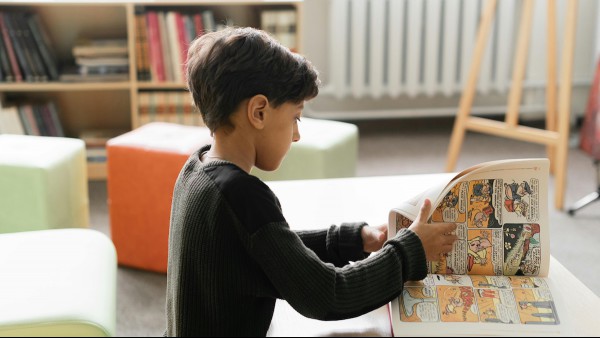Spanish Ser Conjugation: A Complete Guide
Learning Spanish verb conjugations is a fundamental step in mastering the language, and the verb ser (“to be”) is perhaps the most important verb to understand. As one of the two Spanish verbs that translate to “to be” (the other being estar), ser is used constantly in everyday speech to describe permanent or inherent characteristics. This comprehensive guide will walk you through all the conjugations of ser across different tenses and moods, with clear examples to help cement your understanding.
Present Tense Conjugation Of Ser
The present tense (presente de indicativo) is likely where you’ll begin your journey with ser. This tense is used to talk about current states, identities, or characteristics that are considered permanent or inherent.
| Person | Conjugation | Example |
| yo | soy | Yo soy estudiante. (“I am a student.”) |
| tú | eres | Tú eres inteligente. (“You are intelligent.”) |
| él/ella/usted | es | Ella es doctora. (“She is a doctor.”) |
| nosotros/nosotras | somos | Nosotros somos amigos. (“We are friends.”) |
| vosotros/vosotras | sois | Vosotros sois españoles. (“You all are Spanish.”) |
| ellos/ellas/ustedes | son | Ellos son altos. (“They are tall.”) |
“Eres” is the singular conjugation, specifically for the informal “you” (tú) form. The plural equivalent is sois for vosotros/vosotras (informal “you all” used primarily in Spain) or son for ustedes (formal “you all” used throughout the Spanish-speaking world).
For third-person singular (él, ella, usted), the correct form is es. This form applies to he (él), she (ella) and the formal “you” (usted).
Past Tense Conjugations Of Ser
Spanish has several past tenses, but we’ll focus on the two most commonly used with ser:
Preterite (Pretérito Indefinido)
The preterite is used for completed actions in the past.
| Person | Conjugation | Example |
| yo | fui | Yo fui a la fiesta. (“I was at the party.”) |
| tú | fuiste | Tú fuiste amable. (“You were kind.”) |
| él/ella/usted | fue | Ella fue mi maestra. (“She was my teacher.”) |
| nosotros/nosotras | fuimos | Nosotros fuimos a París. (“We were in Paris.”) |
| vosotros/vosotras | fuisteis | Vosotros fuisteis los ganadores. (“You all were the winners.”) |
| ellos/ellas/ustedes | fueron | Ellos fueron médicos. (“They were doctors.”) |
Imperfect (Pretérito Imperfecto)
The imperfect is used for ongoing or habitual actions in the past.
| Person | Conjugation | Example |
| yo | era | Yo era tímido de niño. (“I was shy as a child.”) |
| tú | eras | Tú eras más alto antes. (“You were taller before.”) |
| él/ella/usted | era | Él era profesor. (“He was a teacher.”) |
| nosotros/nosotras | éramos | Nosotros éramos vecinos. (“We were neighbors.”) |
| vosotros/vosotras | erais | Vosotros erais muy divertidos. (“You all were very fun.”) |
| ellos/ellas/ustedes | eran | Ellas eran estudiantes. (“They were students.”) |
Future Tense Conjugation Of Ser
The future tense (futuro simple) is used to discuss what will be in the future.
| Person | Conjugation | Example |
| yo | seré | Yo seré doctor algún día. (“I will be a doctor someday.”) |
| tú | serás | Tú serás un gran artista. (“You will be a great artist.”) |
| él/ella/usted | será | Ella será la directora. (“She will be the director.”) |
| nosotros/nosotras | seremos | Nosotros seremos padres pronto. (“We will be parents soon.”) |
| vosotros/vosotras | seréis | Vosotros seréis los responsables. (“You all will be responsible.”) |
| ellos/ellas/ustedes | serán | Ellos serán nuestros guías. (“They will be our guides.”) |
Conditional Tense Conjugation Of Ser
The conditional tense expresses what would be under certain circumstances.
| Person | Conjugation | Example |
| yo | sería | Yo sería feliz con eso. (“I would be happy with that.”) |
| tú | serías | Tú serías un buen líder. (“You would be a good leader.”) |
| él/ella/usted | sería | Él sería perfecto para el puesto. (“He would be perfect for the position.”) |
| nosotros/nosotras | seríamos | Nosotros seríamos buenos socios. (“We would be good partners.”) |
| vosotros/vosotras | seríais | Vosotros seríais excelentes profesores. (“You all would be excellent teachers.”) |
| ellos/ellas/ustedes | serían | Ellos serían mis invitados. (“They would be my guests.”) |
Subjunctive Conjugations Of Ser
The subjunctive mood is used to express desires, doubts, possibilities or subjective opinions.
Present Subjunctive (Presente de Subjuntivo)
| Person | Conjugation | Example |
| yo | sea | Espero que yo sea seleccionado. (“I hope that I am selected.”) |
| tú | seas | Quiero que tú seas honesto. (“I want you to be honest.”) |
| él/ella/usted | sea | Es importante que ella sea puntual. (“It’s important that she is punctual.”) |
| nosotros/nosotras | seamos | Ojalá seamos ganadores. (“Hopefully we are winners.”) |
| vosotros/vosotras | seáis | Prefiero que vosotros seáis cuidadosos. (“I prefer that you all are careful.”) |
| ellos/ellas/ustedes | sean | Dudo que ellos sean culpables. (“I doubt that they are guilty.”) |
Tips For Mastering Ser Conjugation
- Practice daily: Incorporate “ser” into your daily Spanish practice, trying to form sentences with different persons and tenses.
- Use flashcards: Create flashcards with the different conjugations to help memorize them.
- Distinguish between ser and estar: Remember that ser is used for permanent qualities, while estar is for temporary states or locations.
- Learn through context: Rather than memorizing tables, try to learn conjugations through meaningful phrases and contexts.
- Use online resources: There are many apps and websites dedicated to Spanish verb conjugation practice.
Understanding the conjugation of ser is a significant step in your Spanish language journey. This versatile verb is essential for describing identities, characteristics and permanent qualities. With regular practice and application in real contexts, you’ll soon find yourself using these conjugations naturally and confidently in your Spanish conversations.
This article was created with the assistance of AI.
RECOMMENDED NEWS

How To Talk About Clothes In Italian
There’s never a bad time (or a bad reason) to commit some basic Italian clothing vocabulary to memor...

65 Years Of Asterix And Obelix: How The Duo Conquered Over A Hundred Languages
The brainchild of writer René Goscinny and artist Albert Uderzo, Asterix has been delighting generat...

A Guide To Understanding The Japanese Alphabet
Understanding the Japanese alphabet is crucial for language learners, as it lays the foundation for ...

Rhetorical Questions: The Art Of Asking Without Expecting Answers
Have you ever asked a question when you weren’t really looking for an answer? Of course you have—and...

Unlocking Potential: Vocational Education and Skill Devlopment in India.
Career training and skill enhancementVocational education, sometimes referred to as vocational tra...

Unleashing the Power of Special Education: Empowering Students for Success
Understanding Special Education: An Overview As an educator, I believe that every student deserves ...
Comments on "Spanish Ser Conjugation: A Complete Guide" :